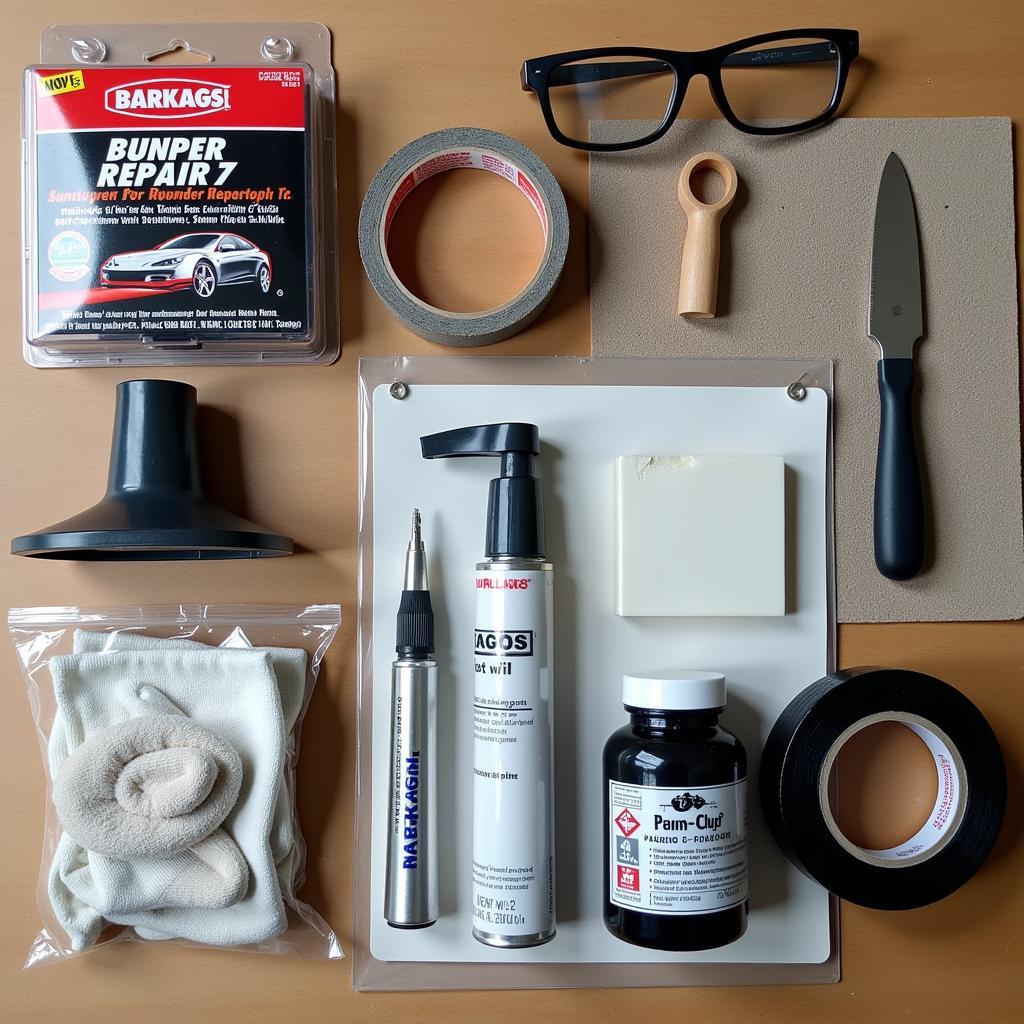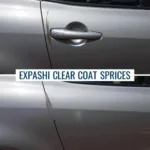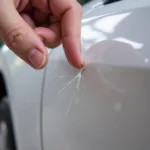A cracked car bumper is an unsightly nuisance, but it doesn’t have to be a costly trip to the body shop. Many bumper cracks can be repaired at home with a few readily available tools and materials, saving you time and money. This guide will show you how to repair a crack in car bumper yourself, step-by-step, from assessing the damage to achieving a professional-looking finish.
Assessing the Bumper Damage
Before you begin, it’s crucial to assess the extent of the damage. Is it a small hairline crack, or a large, gaping hole? Is the bumper made of plastic, fiberglass, or another material? The repair method will vary depending on the severity and type of damage. For minor cracks in plastic bumpers, a DIY repair is often feasible. Larger cracks, or those involving structural damage, may require professional intervention. Knowing the material is key because different materials require different repair compounds. Inspecting the area thoroughly will give you a better idea of the necessary tools and materials you’ll need.
After cleaning the cracked area with soap and water, carefully inspect the damage. Identify the type of plastic your bumper is made of – usually polypropylene (PP) or acrylonitrile butadiene styrene (ABS). This information is often stamped on the inside of the bumper. Knowing this helps you choose the correct repair adhesive. how to repair car bumper crack A proper assessment prevents further damage and ensures a long-lasting repair.
Gathering Your Repair Tools and Materials
Once you’ve assessed the damage, gather the necessary tools and materials. For most plastic bumper repairs, you’ll need:
- Plastic bumper repair kit (containing adhesive, reinforcing mesh, and filler)
- Sandpaper (various grits)
- Masking tape
- Razor blade or utility knife
- Plastic primer
- Paint (matching your bumper color)
- Clear coat
- Gloves
- Safety glasses
A comprehensive repair kit simplifies the process, providing everything needed in one package. Remember to select a kit specifically designed for plastic bumpers. how to repair crack in plastic car bumper Investing in quality materials ensures a durable and professional-looking repair.
 Essential Tools and Materials for Car Bumper Crack Repair
Essential Tools and Materials for Car Bumper Crack Repair
Repairing the Crack: A Step-by-Step Guide
Now, let’s get to the actual repair process:
-
Clean the Area: Thoroughly clean the damaged area with soap and water, removing any dirt, grease, or debris.
-
Prepare the Crack: Use a razor blade or utility knife to slightly widen the crack, creating a V-shaped groove. This provides a better surface for the adhesive to bond to.
-
Apply the Adhesive: Following the instructions provided with your repair kit, apply the adhesive to the crack, ensuring it fills the groove completely.
-
Reinforce with Mesh: If your kit includes reinforcing mesh, apply it over the adhesive. This adds strength and prevents the crack from reappearing.
-
Apply Filler: Once the adhesive has dried, apply filler to smooth out the repaired area and create a seamless surface.
-
Sand and Prime: After the filler dries, sand the area smooth with progressively finer grits of sandpaper. Then, apply plastic primer to prepare the surface for painting.
-
Paint and Clear Coat: Apply several thin coats of paint that matches your bumper color, allowing each coat to dry before applying the next. Finish with a clear coat for protection and shine.
how to repair cracked bumper on car These steps ensure a professional-looking repair that restores your bumper’s appearance and integrity.
How Much Does it Cost to Repair a Cracked Bumper?
The cost to repair a cracked bumper varies widely, from around $50 for a DIY fix to upwards of $1000 for professional repairs involving significant damage. Factors like the severity of the crack, the bumper material, and labor costs all influence the final price.
“A DIY repair is a great option for small cracks and can save you a substantial amount of money,” advises John Smith, Senior Automotive Technician at Auto Experts Inc. “However, for complex damage, consulting a professional is always recommended.”
Conclusion
Repairing a crack in your car bumper doesn’t always require a costly visit to the mechanic. By following these steps and investing in the right materials, you can achieve a professional-looking repair from the comfort of your own garage, saving both time and money. Remember to always assess the damage thoroughly before beginning and prioritize safety throughout the repair process. A little patience and attention to detail can go a long way in restoring your bumper to its former glory. how to repair a crack in car bumper is a manageable DIY project for many car owners.
FAQs
- Can I repair a cracked bumper myself? Yes, minor cracks in plastic bumpers can often be repaired at home with a DIY kit.
- What type of adhesive should I use? Choose an adhesive specifically designed for plastic bumpers, considering the type of plastic your bumper is made of (PP or ABS).
- Do I need to prime the bumper before painting? Yes, priming is essential for proper paint adhesion.
- How long does the repair take? The entire process, including drying times, can take a few hours to a day.
- When should I consult a professional? For large cracks, structural damage, or if you’re unsure about any step, it’s best to consult a professional.
- How can I prevent future bumper cracks? Avoid hitting curbs and parking too close to other vehicles.
- Where can I find a car bumper crack repair near me? car bumper crack repair near me provides a convenient way to locate local repair shops.
Possible Further Questions
- How to match the paint color exactly to my car?
- What types of fillers are best for bumper repair?
- How to deal with cracks in fiberglass bumpers? how to repair cracked paint on car bumper offers guidance on addressing paint issues on car bumpers.
For further assistance, please contact us via WhatsApp: +1(641)206-8880, or Email: [email protected]. Our customer service team is available 24/7.


